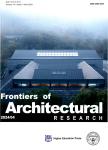Nexus between creative industries and the built environment:Creative placemaking in inner Auckland
作者机构:School of Building ConstructionUnitec Institute of TechnologyAucklandNew Zealand
出 版 物:《Frontiers of Architectural Research》 (建筑学研究前沿(英文版))
年 卷 期:2020年第9卷第1期
页 面:119-137页
核心收录:
学科分类:0303[法学-社会学] 1305[艺术学-设计学(可授艺术学、工学学位)] 0601[历史学-考古学] 0202[经济学-应用经济学] 08[工学] 081303[工学-城市规划与设计(含:风景园林规划与设计)] 0813[工学-建筑学] 0814[工学-土木工程] 0833[工学-城乡规划学]
主 题:Creative industries Property developers Urban transformation Built form Heritage buildings
摘 要:A significant body of literature has examined the location decision-making of creative industry firms.However,research on the nexus between design creative industries and the built environment remains limited.The key finding of this qualitative research is that design creative industries are mostly the users of the inner city s former industrial buildings that are occupied on leases from property owners who are responsible for the initial physical upgrading.This condition is largely due to the low level of property ownership among this group and the lack of incentive to invest additional capital to their business properties.Therefore,design creative industries cannot be conceptualized as leading actors in urban redevelopment or initiators of urban transformation on a large scale.Instead,they represent a latent demand for physical space and a rich source of inspiration and creative potential.In this regard,design creative industries play a key role as enablers of postindustrial real estate development driven by proactive property developers who transform former industrial buildings into a new form of revenue-generating urban commodities.



